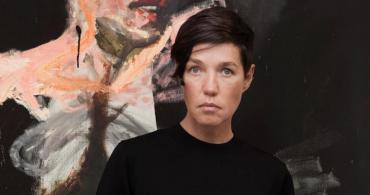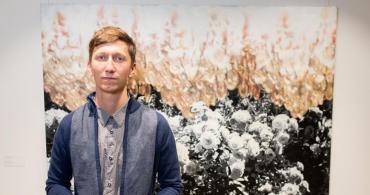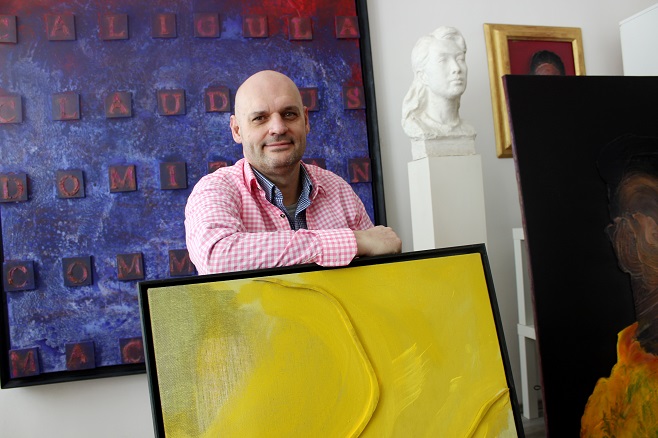
The German artist Sascha Labuda / Photo: artslooker.com
The tradition of cultural exchange between Ukraine and Europe was established long time ago, but for a certain period it existed only unilaterally, proving the significant advantages of the European system of art. Today, more and more representatives of the European art community recognize the Ukraine as a place of cultural strength, interesting personalities and an anarchic mix of exciting ideas. As a german artist with slavic roots, Sascha Labuda tried to find inspiration everywhere: from America to Belgium, France and Malta, and found it in Kyiv. Why from all the cities of the world the artist chose Kyiv, what is the mission of art today and what is lacking in domestic artistic practices, now in ArtsLooker.
Where did your acquaintance with art began?
As a nine-year-old boy, I became interested in art. In the house where my mother lived an artist who created sculptures for the local church had his studio. His craft and art made a serious impression on me and inspired me on the further choice of creative and life path.
What artists influenced you the most while working in Paris?
I went pretty early to study painting and especially printmaking in Paris, and I experienced great influence from the renowned artists Francis Bacon and Roberto Matta. These artists were not only theorists, but also very experienced experts in art techniques. Having settled down at the worldwide known studio of Fernand Mourlot, where I worked as a draftsman for a long time, I was lucky enough to get acquainted with famous renowned artists: Marc Chagall, Francis Bacon, Roberto Matta, Antoni Tapies. Some years later I left Paris and began my own creative search: I lived in Germany, Belgium, Great Britain, the United States, France looking for an interesting unique place where young people want to experiment, creating art of a new era.
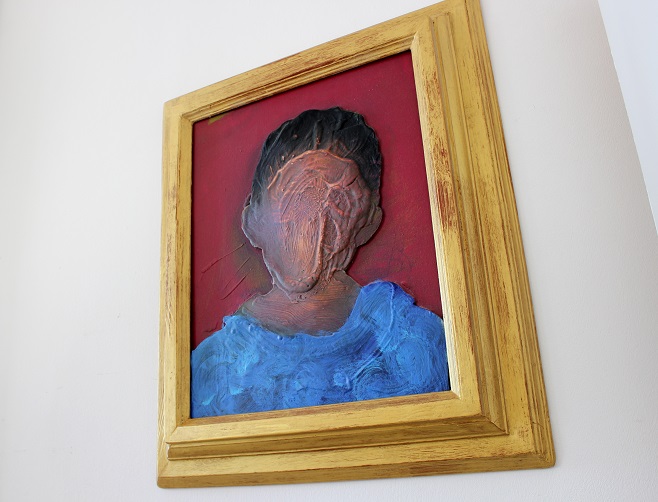
Why in your paintings you prefer abstraction?
At the beginning, very young I began to work more in a classical style, inspired by Roberto Matta, but I understood very well that my view on art was to close to art of more or less established painters and I had to find my individual style. We live in an era of technical innovation, there is no longer any need for hyper realistic illustration of the real world it can be better done by camera and movie, so we have to concentrate the image and go much deeper and be more intense than the camera. You meet a person, get acquainted and communicate with her, then you are guided solely by feelings and you fall in a swirl of emotions and this is what I want to bring to canvas, this very first intense moment which concentrates in the very first second. You do not analyze what exactly attracts you by a person. An artist should not be interested in the illustration of purely external features, he must concentrate on what is hidden behind the veil of a personality, to delve into the very image, realize its uniqueness. I deliberately avoid any detail, because the human emotion is purely abstract. Instinct is the art from which you get sincere emotion.
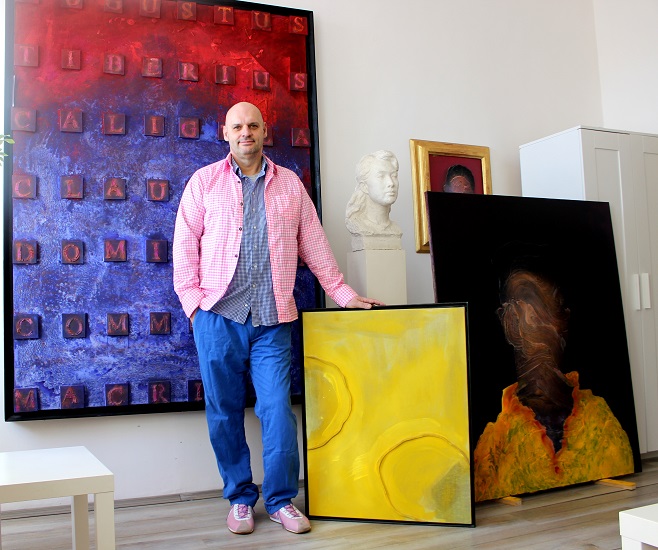
Who usually becomes the subject of your artistic work?
People who inspire me from the first moment people who have an impact on me, that’s why I am so interested in portraits. As an artist you can advance very deep in the hidden world of a person and at the same time you may find your own unmistakable spirit in the finished painting. I try to bring them to a degree of authenticity that they have an impact on the viewer, as a sincere sense of sensation, that deeply touches the audience.
In my practice, I am not guided by rational or intellectual, but only sensory perception of the world. A portrait is done in a way that first the artist experiences a sort of deep tension while looking at a certain person, and then he transmits this intense impact to the canvas. I paint with oil color on cut out wood and every layer of the paint does more and more accurately determine the visually explored image.
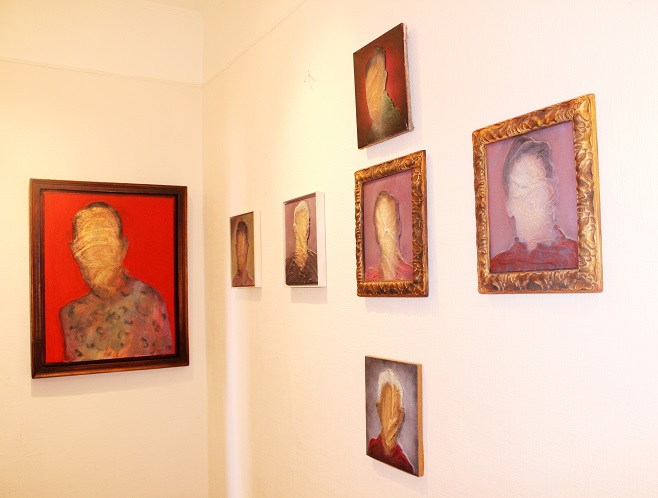
Why do not you share your art in aesthetic and artistic periods?
As an artist I was formed in Paris, and wherever I lived later it had no influence on my work. You could put me in a prison I would work exactly in the same way as in London (smiles). You might say that I’m working on projects “with deep intensity” all my life. With portraits its sometimes even harder, because they require more concentration, they take a lot of energy, while my abstract, compostion are a kind of relaxation. It is important for me to achieve intensity and ambiguity like by example Velasquez did.
You declare color as the main force of artistic expression. Why?
I worked daily with colors during my studies at Mourlot studios. Color was everywhere, I absorbed it from the masters of painting, I studied several hours every day to mix colors and perfectly copy the natural colors. In my work I use a bright palette and the perfect composition of color is important, for me its not pure decoration. It is the key to the instinct and heart of the audience.
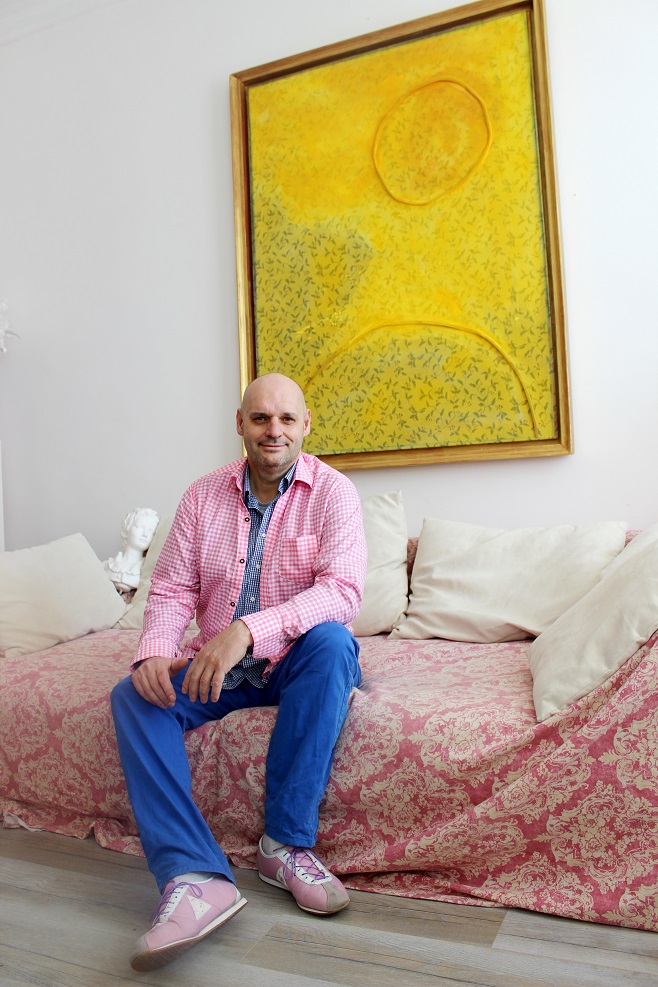
What goals do you set when you start to paint?
To present the painted figure as accurately and profound and emotionally real to the viewers, without any illustration or ineffective realism. A portrait that intellect could never do. Concerning my work, I am interested in eternal always recurring subjects like love and i had Birthday wishes, relationships, hope, subjects that pass through the history of mankind and remain forever enclosed in it.
What is your attitude towards political affairs and the engagement of contemporary art?
It seems to me that an artist and politics are not compatible. At the end I do not want that my art is in service for politics. I speak directly to the instinct of the audience not to their rational behavior. I do not want to convince the audience. All politicians and dictators will disappear, but art will remain forever. If someone wants to speak on a political topic, he should write a book or for the newspapers.
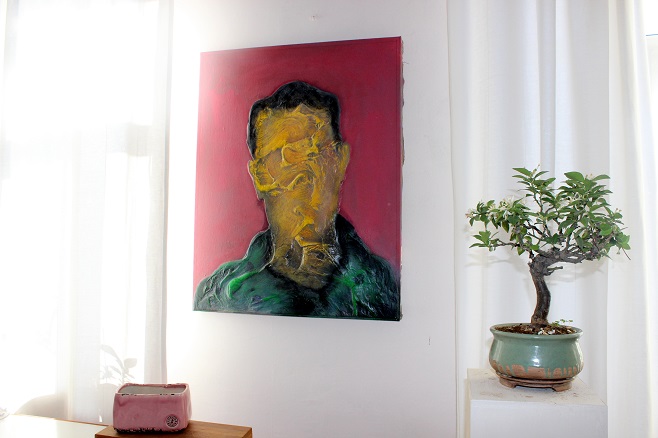
What did inspire you to move to Ukraine a few years ago?
While I used to live in Malta, from where it was going to leave, a friend called me and said that he is now in Kyiv, and is fascinated by this city! I knew little about Ukraine and thought that there were military operations everywhere, but then after having seen lots of photos send by my friend, I felt in love with this city immediately and two weeks later I was in Kyiv. I was born in Germany, my ancestors – from Poland, Georgia and Ukraine. Probably, that’s why I liked it so much, as one says, perhaps it is the heart’s call. I closed my studio in Malta and opened my new space here.

In Kyiv, I immediately felt very relaxed and in love with the city, like once in Paris. And although Ukrainians do not yet have as much value as they deserve, they are much happier than Europeans, because they can enjoy life. As one of the few painters from abroad, I like to show to my colleagues in Europe that the Ukraine may be interesting to them and that they should come here more often to get a different inspiration. I really consider it one of the most beautiful countries in the world, you can compare to France.
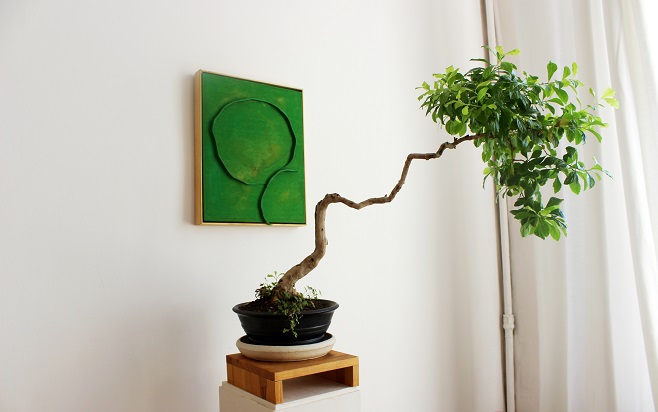
What exactly in Kyiv remind you of Paris in the 80’s?
Kyiv is stylish, young, anarchist, full of new trends and fresh air. However, this is a city with excessive history, which is important to feel. Here lives the most fantastic and most active youth, which today creates a progress in art. In the 80’s in Paris I felt the same. It is believed that Paris was the center of contemporary world art. All was created by young people – they opened theaters, chamber galleries, created incredible innovative exhibition projects. All started to flourish slowly, as it does today in Ukraine.
By the way, in the mid 80 in Paris there was also an unstable socio-political situation, and a very limited art market with few collector, but there was a will of free experiment, due to the enormous energy and enthusiasm of the new generation. Now in Kyiv I think the same evolution happens. In spite of the tense situation, young people create a great cultural lifestyle: and they are optimistic, share ideas, work, develop and move forward. Young people in Ukraine have all my respect and they wake me up with their fresh spirit and endless inspiration.
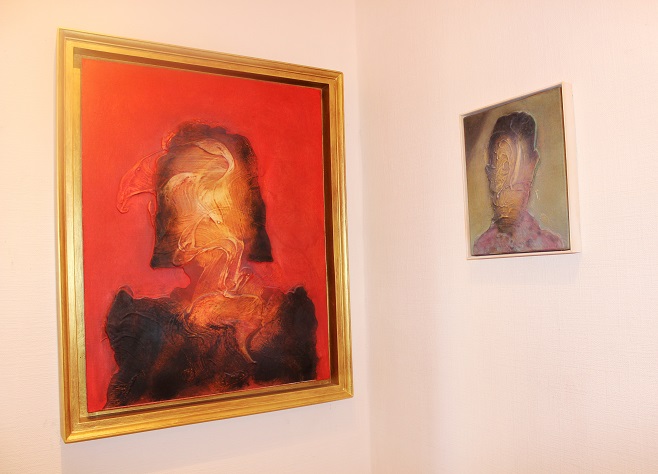
What is the global mission of contemporary art, in your opinion?
Classical art did not only create a big surprising WOW – effect, while the dominant world of contemporary art today often is the short term show-business itself. Therefore, most authors are trying to attract attention by provocative matters or complicated technical innovations, which certainly does not increase the artistic value of the work. One of the biggest problems of European art is the enormous amount of money connected to this. Art becomes an object of decoration or investment, often loosing its true purpose.
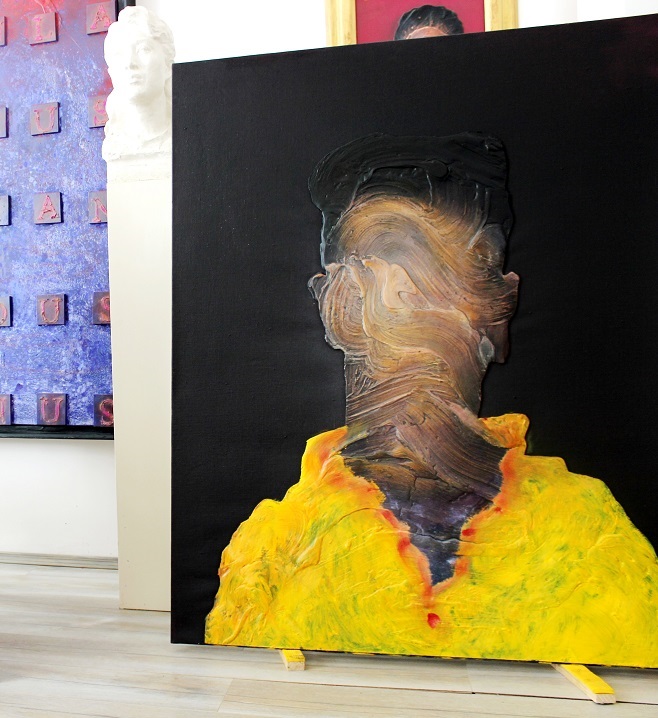
And finally, what problems do you see in the system of Ukrainian art?
In Ukrainian art, in my opinion, there is too much nationalism, so it is difficult to translate it into an international level, because no one will understand it in Paris, Berlin, New York. If you use the elements of tradition and folklore in the art work and pay attention constantly to the coverage of the national idea, then you must realize that you are producing art exclusively for your country, instead of representing the entire world of art. By the way I am against “folklore” in art. Folklore wants to keep tradition through the centuries and art looks for a continuous evolution.
The only one I know who really did integrate it with success in his work was Marc Chagall, but this is rather an exception than a rule. For international success, it is good to be politically and ideologically independent and a global thinking citizen.
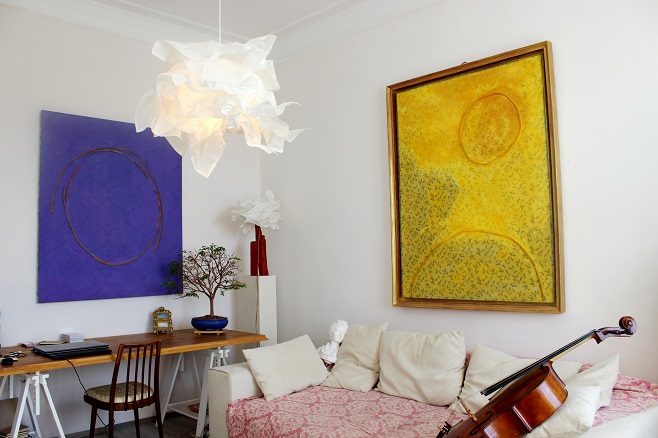
An important problem too is the lack of professional art critic that could unequivocally clearly formulate to the artist: “good” or “not good”. Analytical criticism does not exist in Ukraine at present, because everyone is very afraid to offend and spoil friendly relations. Professional activity should not affect privacy. Without professional critics it is difficult to understand whether the author has chosen the right path or if he confront the public with low-quality secondary works. Exhibition projects should if possible in the future also be of a museum of international level so that the artists are able to be inspired by masters like Bacon, Picasso, Dali and compare their art work without having always to leave their country. It is important to give a serious path to the young, so they do not stay exclusively in the classic arts.
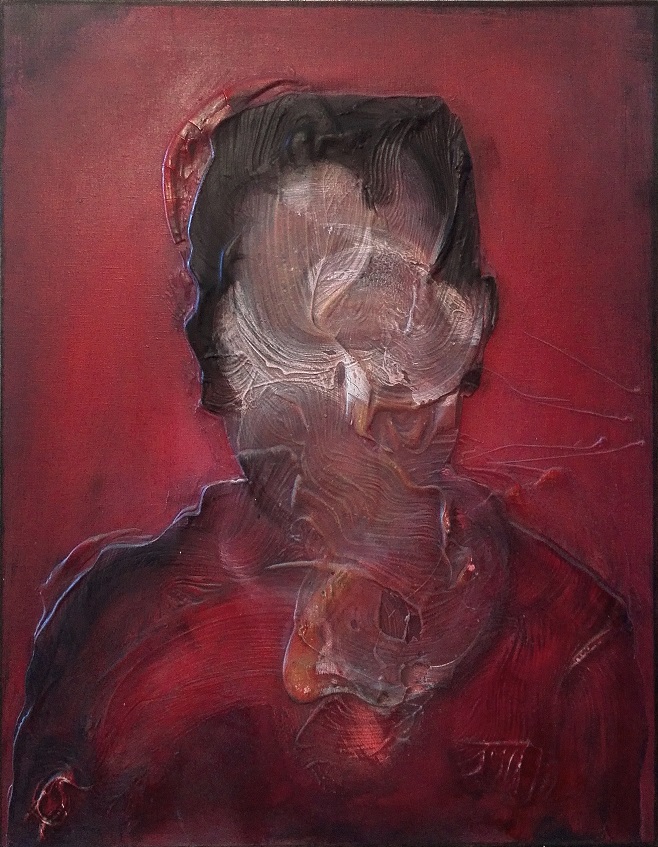
Although art critic is not an offense either against the personality of the artist or his influence on a certain period of Ukrainian art. Therefore, you really need critics to keep the quality in art for the future, giving authors the opportunity to form a competitive strong art world.
Posted by Roksana Rublevska
Share:
